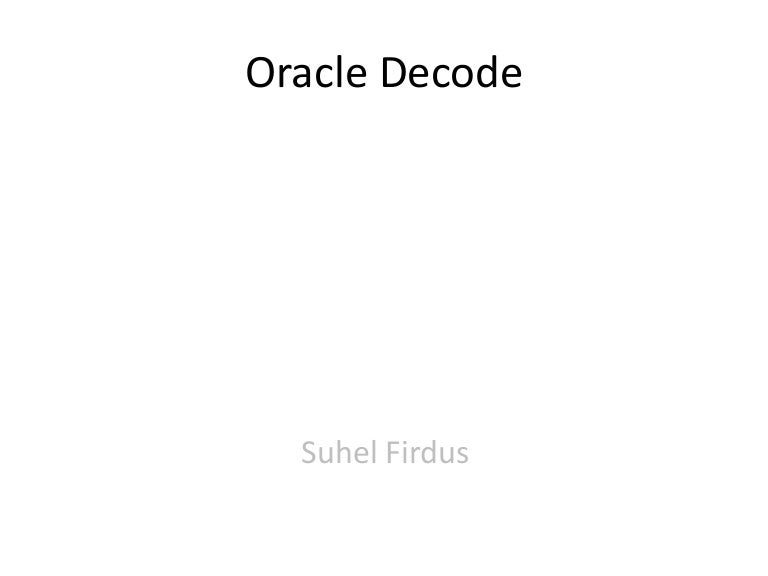

If the provided values are numeric, then Oracle determines the datatype to be returned by checking all of the other data types.


If both expression and search are character types, then a character comparison is used and the returned value is a VARCHAR2 data type. These arguments can be of any numeric type (NUMBER, BINARY_FLOAT, BINARY DOUBLE) or character types. If you compare this to an IF-THEN-ELSE statement, it would look like this: IF ( expression = search) THEN result If the default value is not provided, the DECODE function will return NULL if no matches are found. default (optional): If none of the search values match, then this value is returned.There can be multiple combinations of search and result values, and the result value is attached to the previous search value. result (mandatory): This is what is returned if the search value mentioned previously matches the expression value.search (mandatory): This is the value to compare against the expression.expression (mandatory): This is the value to compare.The parameters of the Oracle DECODE function are: The syntax of the DECODE function is: DECODE ( expression, search, result. It works similar to an IF statement within other languages. It allows you to provide a value, and then evaluate other values against it and show different results. It’s similar to a CASE statement, but CASE is a statement where DECODE is a function. The purpose of the Oracle DECODE function is to perform an IF-THEN-ELSE function. Learn more about this function and some examples in this video. It’s a useful function for comparing values. The Oracle DECODE function can be confusing to those who have never used it.


 0 kommentar(er)
0 kommentar(er)
